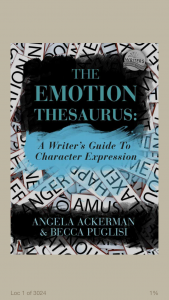You can’t exist for long in the writing world without hearing at least a mention of NaNoWriMo – national novel writing month. During the month of November, the challenge is to complete a novel of 50,000 words. The writing should not start until 1st November, should be a new project, and the word count target should be reached on or before 30th November. Winners – those who upload and validate at least 50k words – receive all sorts of goodies from the sponsors, such as discounts on writing software or discounted membership of writing communities.
Some people swear by nano – some hate it. Some never open their projects again, some go on to publish. Some enter year after year and fail every time. Some enter every year and win, but do no other writing all year. Some win on their first year and then swear never ever to do it again.
One thing you must be aware of when taking nano on is that the writer who can storm through their novel draft in 30 days or less and then publish it within a week is a very rare creature. What’s much more likely is that you’ll be left with a draft zero, something that has got the story down in words but that needs a lot of refining, redrafting and a major dose of editing before it’s ready to be seen by anyone other than the writer.
So when you have finished nano, don’t rush to publish your work without considering the quality very carefully. On the other hand, don’t throw it into the bin in despair because it’s not ready to publish. That’s only to be expected. Never judge a novel by the first draft.
Please, if you’re going to take part in nanowrimo, enjoy the experience, make the most of the peer support and general buzz about writing, and then consider very carefully your next step. And before you try to submit to agents or publishers, please bear in mind that they have generally learned to dread the words “here is my nanowrimo novel” because of the pile of raw drafts they receive around December/January time!








